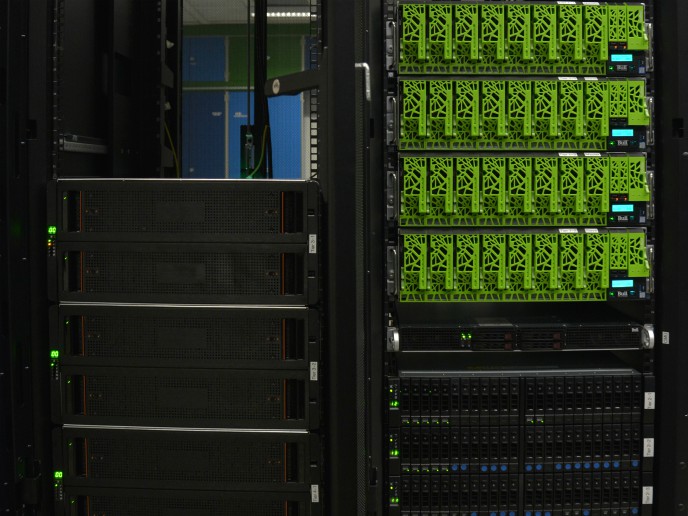New data storage system takes the bite out of exascale supercomputing
Supercomputers are machines with many (these days, thousands) processors that work in parallel to achieve calculation rates far beyond normal computers. The latest generation is known as exascale supercomputers. Defined as those exceeding one billion billion calculations per second, the newest machines represent a thousandfold speed increase compared to the best of only a decade ago. Such equipment is used in research fields demanding the ultimate computational power, for example: weather/climate studies, genomics and human brain simulations. Current data management technologies already struggle with the demands of supercomputers. For instance, a conventional high-performance supercomputer might run a simulation on 8 000 plus processors that produces 25 TB of data every day. Processing the raw data multiplies the amount by two or three. Some applications already have to read hundreds of terabytes. Now, with exascale supercomputers, applications producing petabytes (1 000 TB) will be commonplace. Computers generally store data in one place and move them to another for analysis or processing. Currently, even with the best available networks, moving terabytes or petabytes of data can take many hours. This represents a serious bottleneck. In addition, the data movement requires tremendous amounts of power, in the range of hundreds of megawatts. Removing the bottleneck The EU-funded SAGE(opens in new window) project developed a new data storage system able to meet the demands of exascale computing. The innovation minimises the need for data transport. “Instead of moving data, our system takes the computation to the storage system,” explains project leader Dr Sai Narasimhamurthy. Data can be processed in, or close to, the storage location. Supercomputing applications can drop in analytical modules as needed. SAGE’s ‘intelligent storage’ system additionally involves optimising data storage. Data may be stored in any of several tiers, including: conventional hard discs, solid state discs and non-volatile memory. Each has certain performance properties. The SAGE system moves data to the tier with the appropriate performance characteristics at the right time. This improves performance. The combination of both aspects means flexibility and versatility. Applications having various complex data formats can use different types of data management tools. This yields a powerful and extendable application programming interface, which the SAGE team also developed. Prototype demonstration “Our prototype was ‘very small’,” adds Dr Narasimhamurthy, “able to handle less than half a petabyte of data. Also, our software is not yet optimised.” Therefore, it is unrealistic to compare prototype performance against large production clusters. Instead, the team’s main focus was proving that the methods and techniques work; they do, and can easily upscale to larger storage hardware. Reception from the scientific community has been very positive. Following the successful demonstration, the project will continue as Sage2. The new project will extend the SAGE prototype and explore new ways of using distributed non-volatile memory storage. It will also examine artificial intelligence and ‘deep learning’ applications of exascale supercomputers. The SAGE system will remove or greatly reduce bottlenecks affecting exascale supercomputers, allowing the machines to operate closer to full speed. Also, power consumption is ultimately expected to be around 100 times less than that used in current systems. The worldwide market for high-performance computing storage is expected to reach USD 6 billion in 2021. The market for Big Data analytics and cloud storage will be even bigger. The SAGE projects will be targeting the European components of both markets.







